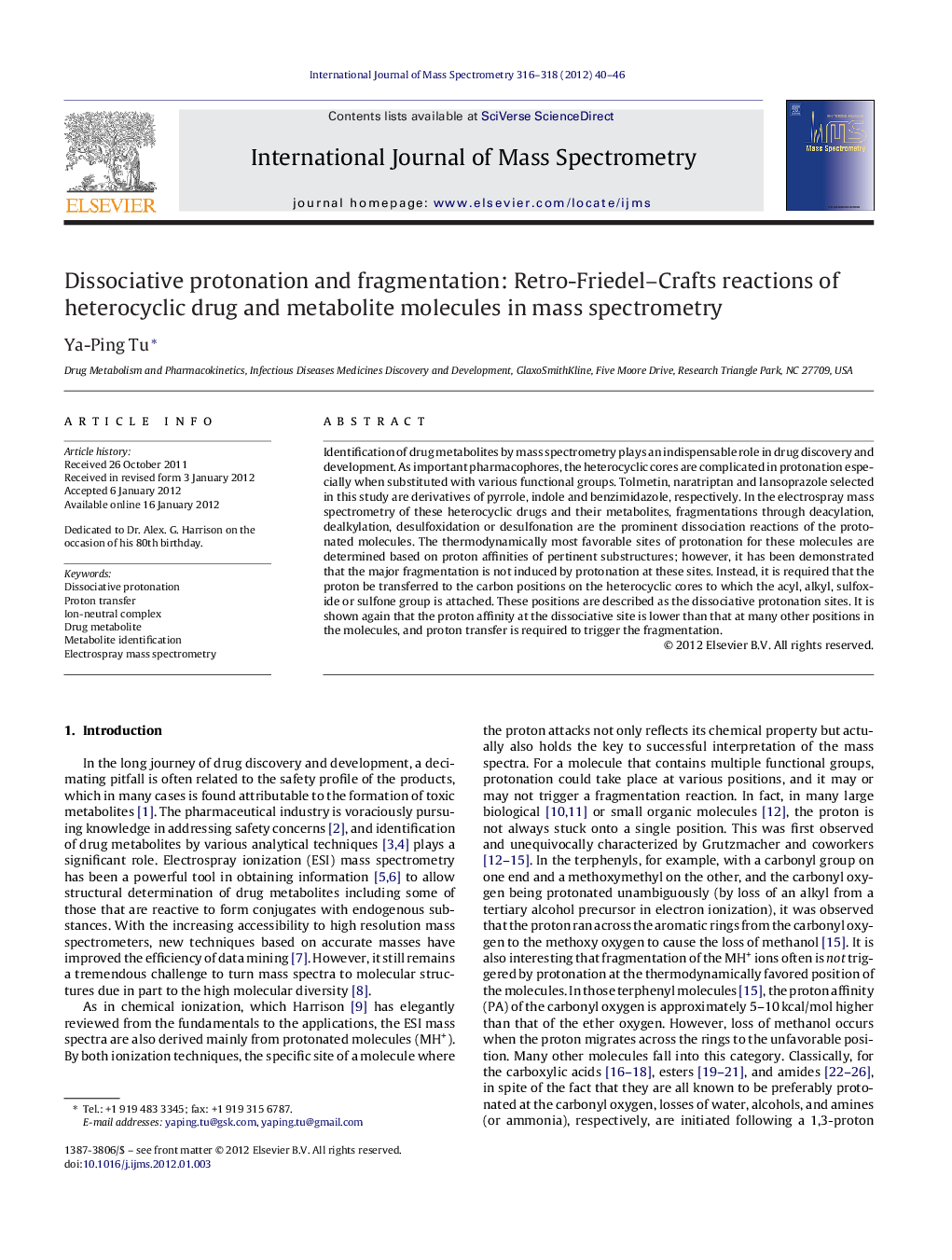| Article ID | Journal | Published Year | Pages | File Type |
|---|---|---|---|---|
| 1192232 | International Journal of Mass Spectrometry | 2012 | 7 Pages |
Identification of drug metabolites by mass spectrometry plays an indispensable role in drug discovery and development. As important pharmacophores, the heterocyclic cores are complicated in protonation especially when substituted with various functional groups. Tolmetin, naratriptan and lansoprazole selected in this study are derivatives of pyrrole, indole and benzimidazole, respectively. In the electrospray mass spectrometry of these heterocyclic drugs and their metabolites, fragmentations through deacylation, dealkylation, desulfoxidation or desulfonation are the prominent dissociation reactions of the protonated molecules. The thermodynamically most favorable sites of protonation for these molecules are determined based on proton affinities of pertinent substructures; however, it has been demonstrated that the major fragmentation is not induced by protonation at these sites. Instead, it is required that the proton be transferred to the carbon positions on the heterocyclic cores to which the acyl, alkyl, sulfoxide or sulfone group is attached. These positions are described as the dissociative protonation sites. It is shown again that the proton affinity at the dissociative site is lower than that at many other positions in the molecules, and proton transfer is required to trigger the fragmentation.
Graphical abstractFigure optionsDownload full-size imageDownload high-quality image (87 K)Download as PowerPoint slideHighlights► We studied the electrospray mass spectrometry of tolmetin, naratriptan and lansoprazole, which are derivatives of pyrrole, indole and benzimidazole. ► Prominent fragmentation through deacylation, dealkylation, desulfoxidation and desulfonation was observed. ► Preferred protonation sites are determined for these heterocyclic drug and metabolite molecules. ► The major fragmentation is induced by protonation at the dissociative protonation site, which is not the preferred site for protonation.
